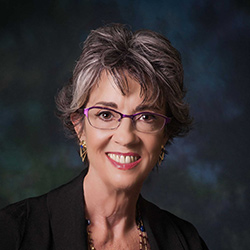Robyn Stone is watching the evidence-based “Mouth Care Without a Battle” program. Here’s why.
I’m guessing that you probably brush your teeth twice a day, if not more.
So you’ll probably be surprised – perhaps even horrified – to learn that 80% of residents in some nursing homes don’t receive daily tooth brushing, and that fewer than 20% have “very good” or better oral hygiene.
Why is mouth care in nursing homes so inadequate? Researchers point to a variety of reasons, including poor worker training, care-resistant residents, and the fact that some workers just don’t want to do mouth care.
For me, the most compelling reason for poor oral care is the fact that, until very recently, we haven’t fully understood that mouth care isn’t about good grooming. It’s actually about good health.
In fact, researchers now believe that poor oral care can actually lead to serious, and often deadly, health conditions among older adults.
WHY I’M WATCHING MOUTH CARE WITHOUT A BATTLE
It’s hard not to be impressed with $831 million in annual cost savings. But I’m watching Mouth Care Without a Battle because it addresses 2 goals that I hold dear: culture change and worker empowerment.
Expanding our ideas about culture change. What sets Mouth Care Without a Battle apart from other interventions is that it provides comprehensive training to certified nursing assistants (CNA) in 2 distinct areas.
First, it gives CNAs specific skills for improving residents’ oral health by teaching them proven techniques for brushing all teeth surfaces, cleaning between teeth, and caring for the gums.
Second, the program teaches person-centered techniques that can help make oral care less threatening to residents and can mitigate the care-resistant behaviors that 90% of CNAs encounter while providing oral hygiene.
This 2-pronged training approach empowers CNAs while expanding our thinking about culture change. It reminds us that any organizational commitment to culture change principles must be backed up with concrete tools to help CNAs actually do their jobs well.
The CNA’s toolkit must include both care-based skills and person-centered practices. Without both types of training, CNAs will be hard-pressed to help their nursing homes achieve good quality outcomes.
Empowering workers. The Mouth Care Without a Battle model calls for every nursing home to designate one CNA as its oral care specialist.
Oral care specialists have a big – and desirable – job. They are responsible for ensuring the overall quality of the nursing home’s oral health care. They serve as champions who inform, support, and motivate other CNAs and keep their work on track. They also provide care to residents for whom mouth care takes longer or is more challenging.
The oral care specialist position provides an important opportunity for CNAs to learn new skills, take on new responsibilities, and enhance their professional standing. Providing career ladders like this has been shown to strengthen the workforce and reduce turnover.
That certainly seems to be the case in North Carolina.
Over the past 2 years, the nursing homes participating in the UNC study’s intervention group have seen virtually no turnover in the oral care specialist position. That finding suggests that the dedicated worker model is a rousing success.
DON’T WAIT FOR CMS
The Mouth Care Without a Battle story is far from over. The Centers for Medicare and Medicaid Services (CMS) recently asked Zimmerman and her colleagues to create 1-hour training videos – in English and Spanish – so more nursing homes can learn how to implement the program.
I’m pleased to see that CMS recognizes the value of this program. But I have just one piece of advice for LeadingAge members.
Don’t wait for the CMS videos. Instead, check out the comprehensive training package that UNC has already developed for Mouth Care Without a Battle.
You’ll do your organization a favor if you take advantage of this opportunity to improve the health of your residents while strengthening the skills of your workforce.

Robyn I. Stone, DrPH, is senior vice president of research at LeadingAge, and co-director of the LeadingAge LTSS Center @UMass Boston. Her widely published work addresses long-term care policy and quality, chronic care for people with disabilities, the aging services workforce, affordable senior housing, and family caregiving.
